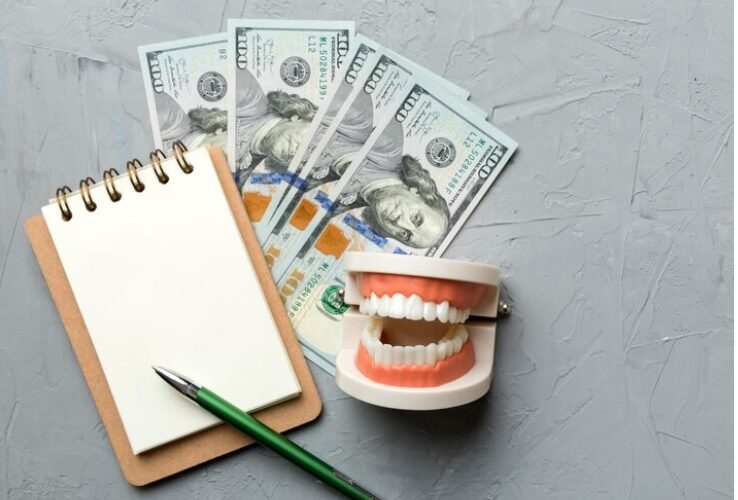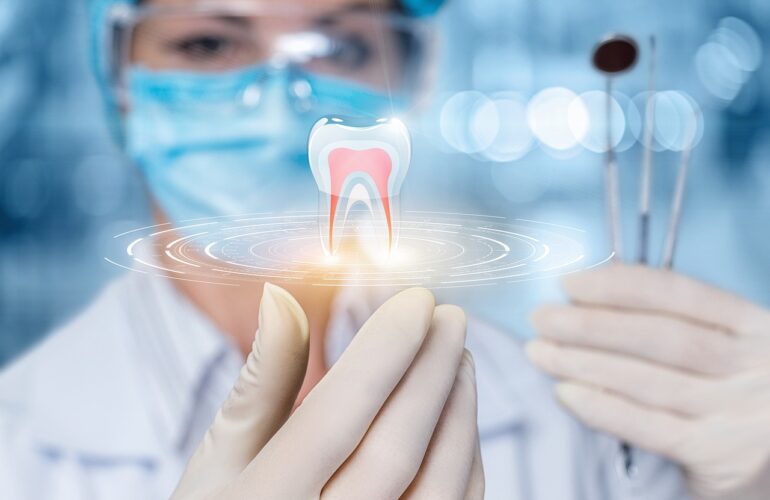Welcome to the 10 common dental problems guide which covers everything you need to know. We’ve got you covered from cavities to gum disease and tooth sensitivity. Let’s explore together so you can take control of your oral health and achieve a beautiful, healthy smile.
Dental Problem 1: Tooth Decay
Tooth decay occurs when plaque containing harmful bacteria build up and produces acids that erode the tooth enamel over time. Poor oral hygiene, sugary foods, and frequent snacking are few of the reasons for tooth decay.
- Symptoms: Early stages may be symptom-less, but as decay progresses, you may experience toothache, tooth sensitivity, visible pits or holes in the teeth, or dark spots.
- Treatment: The best treatment for tooth decay is to remove the decayed portion of the tooth and fill the cavity with materials such as dental amalgam or tooth-colored composite resin.
Dental Problem 2: Gum swelling
The most commonly occurring problem , periodontal disease, is primarily caused by bacterial infection. This infection is the result of plaque and tartar buildup along the gumline. Poor oral hygiene, tobacco use, hormonal changes, and certain medications can increase the risk.
- Symptoms: Early signs include red, swollen, bleeding gums, bad breath, and gum recession. In advanced stages, you may experience loose teeth or changes in your bite.
- Treatment: Scaling and root planing, or deep cleaning, is a common treatment to remove plaque and tartar from above and below the gumline. In severe cases, surgical procedures such as flap or bone grafting may be necessary to restore gum health.
Dental Problem 3: Tooth Sensitivity
Tooth sensitivity often occurs when the protective enamel layer wears down. This exposes the underlying dentin (Dentin or dentine is a layer of material that lies immediately underneath the enamel of the tooth). Common causes include tooth erosion, gum recession, tooth grinding, and dental procedures.
- Symptoms: sensitivity to foods and beverages that are hot, cold, sweet, or acidic, as well as discomfort when brushing or flossing
- Treatment: Desensitizing toothpaste, dental sealants to protect exposed surfaces, or, in severe cases, bonding or dental restorations to cover sensitive areas are all treatment options.
Dental Problem 4: Bad Breath (Halitosis)
Persistent bad breath can result from poor oral hygiene, gum disease, dry mouth, tobacco use, certain foods, or underlying health conditions.
- Symptoms: Persistent unpleasant odor from the mouth, dry mouth, or a bitte taste in the mouth.
- Treatment: Treatment involves improving oral hygiene practices, getting regular professional cleanings, addressing underlying dental issues, and adopting habits like tongue scraping or using mouth rinses.
Dental Problem 5: Tooth Loss
Tooth loss can occur due to tooth decay, gum disease, trauma, or genetic factors. Poor mouth hygiene, smoking, and certain medical conditions can also contribute.
- Symptoms: Visible gaps in the mouth, difficulty chewing or speaking, shifting of remaining teeth, and potential impact on self-esteem.
- Treatment: The best treatment options for tooth loss include dental implants, bridges, or dentures, depending on the number of missing teeth and individual patient needs.
Dental Problem 6: Teeth Grinding (Bruxism)
Bruxism often results from stress, anxiety, misaligned teeth, or sleep disorders.
- Symptoms: Teeth grinding or clenching, especially during sleep; worn-down tooth surfaces; headaches, jaw pain, and tooth sensitivity.
- Treatment: Treatment options include wearing a custom-made night guard or mouthguard to protect teeth, stress management techniques, and addressing any underlying causes like misalignment or sleep issues.
Dental Problem 7: Oral Cancer
Oral cancer can be caused by various factors, including smoking and drinking, tobacco use, human papillomavirus (HPV) infection, extended sun exposure, and a family history of cancer.
- Symptoms: Persistent mouth sores, pain or difficulty swallowing, hoarseness, lumps or thickening of oral tissues, and unexplained weight loss.
- Treatment: Treatment approaches for oral cancer include surgery to remove cancerous tissues, radiation therapy, targeted drug therapy, depending on the severity of stage and location of the cancer.
Dental Problem 8: Crooked Teeth
- Crooked teeth can result from genetic factors, jaw irregularities, early loss of baby teeth, or habits like thumb-sucking or tongue thrusting.
- Symptoms: Misaligned teeth, difficulty cleaning between teeth, potential impact on bite alignment and speech, and self-consciousness about the smile’s appearance.
- – Treatment: Orthodontic treatments like braces, clear aligners, or retainers can gradually shift teeth into proper alignment. In some cases, dental veneers or crowns may be recommended for cosmetic improvement.
Dental Problem 9: Dental Trauma
Dental trauma can result from accidents, sports injuries, or falls, leading to chipped, cracked, or knocked-out teeth.
- Symptoms: Visible damage to teeth, pain, bleeding, or difficulty biting and chewing.
- Treatment: Treatment plans depend on the severity of the trauma and may include dental bonding, crowns, veneers, root canal therapy, or dental implants to restore damaged teeth and prevent further complications.
Dental Problem 10: Dry Mouth (Xerostomia)
Dry mouth can be caused by medications, certain medical conditions, radiation therapy, nerve damage, or lifestyle factors such as tobacco or alcohol use.
- Symptoms: Dry, sticky feeling in the mouth, frequent thirst, difficulty swallowing, altered taste sensation, and increased dental decay.
- Treatment: Treatment involves identifying and addressing the underlying cause, increasing hydration, stimulating saliva production with sugar-free candies or gum, using artificial saliva substitutes, and adjusting medication dosage or type if possible.
Conclusion:
By seeking professional dental care and adopting preventive measures, you can effectively address these issues and enjoy a healthy smile. Consult your dentist for personalized guidance and treatment recommendations based on your specific needs.




